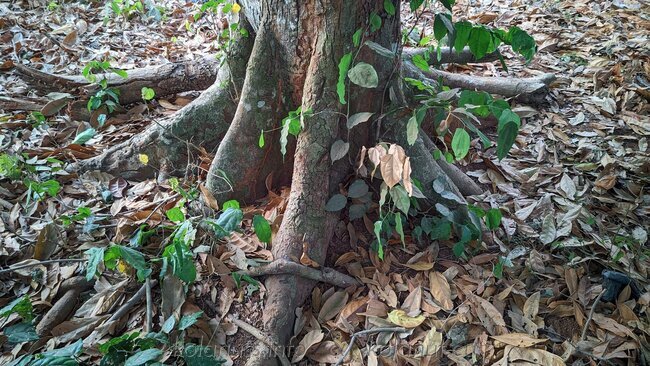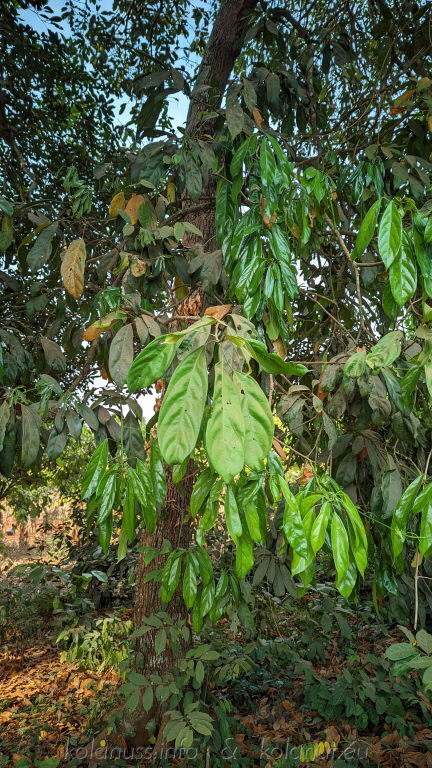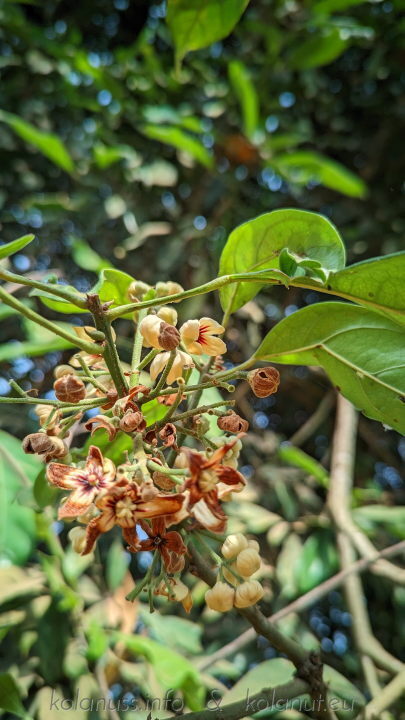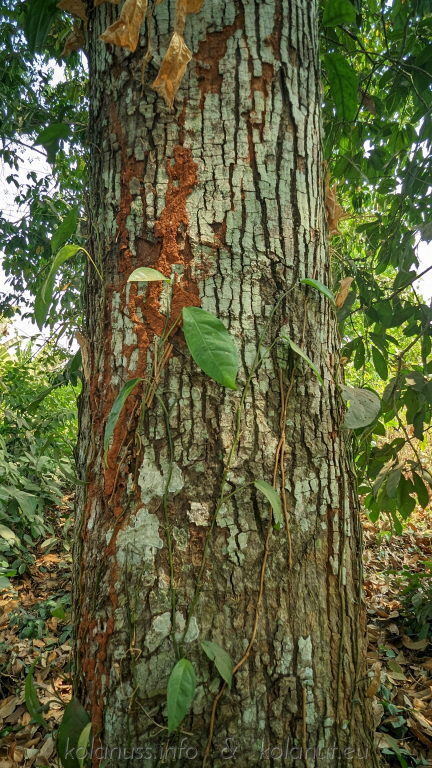The kola trees are evergreen deciduous trees with alternate leaves. They also have stipules, but these usually fall off. In their natural habitat, the tropical forest of West and Central Africa, the trees can grow up to 25 meters tall, but they usually only reach a height of 10 to 15 meters. The spread of their crown is also strongly influenced by the amount of vegetation around them. In West Africa, they are among the trees that provide shade for lower vegetation, as well as animals and humans with their leaves, but when standing alone, their crown develops even more extensively.
|
|
|
|
|
The leaves of the kola trees grow up to 40 cm long and about 6 cm wide. They are oval in shape, dark green and leathery with an uneven surface and a waxy layer that protects them from evaporation. |
Their flowers are white or yellow, partly with red to pink stripes, and both hermaphroditic and male flowers occur on the same tree in clusters. The bark is greenish-brown to grayish, often square-shaped or vertically brittle and rough. |
The bark is greenish-brown to grayish, often in a cuboid shape or vertically and rough. |
The wood of the kola tree is well suited as firewood and is also used for building houses and furniture, for carvings, weapon handles, fishing boats, and musical instruments. The sapwood, the outer area where growth takes place, is lightly pink in color, while the heartwood has a yellowish-brown color.
Older and larger specimens also usually form so-called buttress roots, which grow laterally out of the tree at a height of up to half a meter and thus increase stability.
The fruits are mostly star-shaped arranged so-called follicle fruits, which grow in pairs of five. The outer skin is uneven and green, turning dark green as they ripen. Inside the oval and curved fruits are 5-12 seeds, so-called "kola nuts", which, however, are not nuts in the narrower botanical sense. However, this term has become established and is therefore used.
Furthermore, the kola tree plays a significant role in agriculture, particularly in combination with cocoa trees. It serves as an intercrop because both plants bear fruit all year round but have different main seasons. Additionally, cocoa thrives better in the shade of larger trees, such as the kola tree, which provides it with the necessary protection. This symbiosis not only promotes the productivity of both crops but also contributes to the improvement of soil quality and natural pest control. Last but not least, the value of the kola nuts themselves should not be forgotten, as they are in demand and can be sold well, even if only on the regional market and, unlike cocoa, hardly find any international buyers.

 DE
DE  EN
EN 


